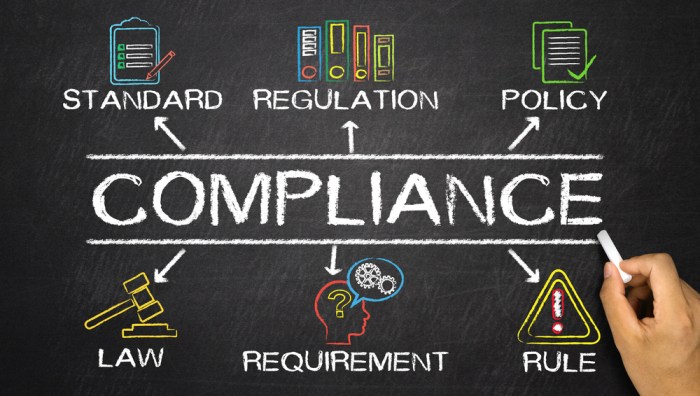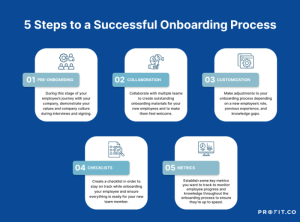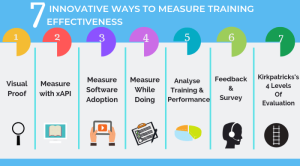
Navigating the complex landscape of corporate regulations requires a robust understanding of compliance. This guide delves into the essential aspects of corporate compliance training, exploring its core components, design principles, and measurement strategies. We’ll examine how effective training programs contribute to a company’s growth, mitigate risks, and enhance its reputation. The discussion will also touch upon the broader context of corporate training and development, showcasing the integration of compliance training within a holistic organizational learning strategy.
From defining the key elements of a successful compliance program to implementing engaging training modules and measuring their effectiveness, this guide provides a practical framework for organizations seeking to strengthen their compliance posture. We will explore various training methodologies, including online, in-person, and blended learning approaches, highlighting their respective benefits and challenges. The importance of fostering a culture of compliance will also be a central theme, emphasizing the role of employee engagement and ongoing reinforcement.
Designing Engaging Compliance Training
Creating engaging compliance training is crucial for ensuring employees understand and adhere to company policies. Dry, text-heavy modules often lead to disengagement and poor retention. By incorporating interactive elements and leveraging proven learning techniques, we can significantly improve the effectiveness of our training programs.
Workplace Safety Module: Lifting Techniques
This module focuses on proper lifting techniques to prevent workplace injuries. The training will utilize a blended learning approach, combining video demonstrations, interactive exercises, and a practical assessment. The module begins with a short video showcasing correct and incorrect lifting methods, highlighting potential hazards associated with improper techniques. This is followed by an interactive quiz testing knowledge of key safety principles.
Finally, participants will demonstrate proper lifting techniques under the supervision of a trainer.
Best Practices for Interactive and Memorable Training Content
Effective training utilizes various techniques to maintain learner engagement. Short, focused modules are preferred over lengthy sessions. Visual aids, such as diagrams and infographics, improve understanding and retention. Real-world case studies, illustrating both successful and unsuccessful compliance scenarios, provide relatable context. Regular knowledge checks, interspersed throughout the training, reinforce learning and provide immediate feedback.
Gamification and Storytelling in Compliance Training
Gamification can significantly boost engagement. Points, badges, and leaderboards can incentivize participation and foster a competitive spirit. For example, employees could earn points for completing modules and quizzes, unlocking badges for achieving specific milestones. Storytelling transforms abstract compliance rules into relatable narratives. A compelling story about a workplace accident caused by neglecting safety protocols can be far more impactful than a dry recitation of safety regulations.
Effective Assessment Methods
Multiple assessment methods should be used to gauge employee understanding. Quizzes and tests assess knowledge recall. Scenario-based simulations evaluate the ability to apply learned knowledge in real-world situations. Practical demonstrations allow for the assessment of physical skills, as seen in the lifting techniques module. Post-training surveys gather feedback on the effectiveness of the training and identify areas for improvement.
For example, a scenario might present an employee with a heavy box to lift and ask them to describe the steps they would take to lift it safely, based on the training. This goes beyond simple recall and tests practical application.
Measuring the Effectiveness of Compliance Training
Effective compliance training isn’t just about delivering the information; it’s about ensuring that information translates into consistent, compliant behavior across the organization. Measuring the effectiveness of your program allows you to identify strengths, weaknesses, and areas needing improvement, ultimately leading to a more robust and impactful compliance culture. This involves a multi-faceted approach, encompassing various data points and analytical methods.
Key Performance Indicators (KPIs) for Compliance Training Success
Tracking the right KPIs provides crucial insights into the success of your compliance training. These metrics should offer a clear picture of both the training’s reach and its impact on employee behavior. Focusing on a few key indicators, rather than trying to track everything, will yield more meaningful results and allow for easier analysis.
- Completion Rates: This straightforward metric measures the percentage of employees who complete the training. Low completion rates may indicate issues with training length, accessibility, or engagement.
- Time to Completion: Analyzing the average time taken to complete the training can reveal potential areas of confusion or difficulty within the modules. Unusually long completion times might suggest the need for simplification or better instructional design.
- Knowledge Retention: Post-training assessments, quizzes, or tests can gauge how well employees retain the information. This is a critical indicator of training effectiveness and highlights areas requiring reinforcement.
- Compliance Incidents: A decrease in compliance violations after training implementation is a strong indicator of its effectiveness. Tracking the number and types of incidents can help pinpoint specific areas where training needs to be strengthened.
- Employee Feedback Scores: Collecting feedback on training satisfaction, clarity, and relevance provides valuable insights into areas for improvement. High satisfaction scores generally correlate with better knowledge retention and behavioral change.
Evaluating the Impact of Training on Employee Behavior and Organizational Culture
Beyond simple metrics, assessing the impact of compliance training on employee behavior and the overall organizational culture requires a more holistic approach. This involves qualitative and quantitative methods to paint a complete picture.
Observational studies, anonymous surveys, and focus groups can be used to gauge changes in employee behavior and perceptions. For instance, a reduction in reported instances of unethical conduct or an increase in proactive reporting of potential compliance issues can indicate a positive shift in organizational culture. Analyzing internal audit findings, legal cases, and regulatory inspections can also provide valuable insights into the effectiveness of training in preventing non-compliance.
Gathering Feedback from Employees on Their Training Experience
Employee feedback is invaluable for improving training effectiveness. A well-structured feedback mechanism should be both anonymous and easy to use.
Methods for gathering feedback include post-training surveys, focus groups, and informal feedback sessions. Surveys should include both quantitative questions (e.g., rating scales) and qualitative questions (e.g., open-ended feedback) to gather a comprehensive understanding of the employee experience. Focus groups provide a deeper understanding of employee perspectives and can uncover nuanced issues that might be missed in surveys. Informal feedback mechanisms, such as suggestion boxes or regular communication channels, allow for continuous improvement.
Analyzing Training Data to Identify Areas for Improvement
Analyzing the collected data is crucial for identifying areas needing improvement in the compliance training program. This involves combining quantitative and qualitative data to create a comprehensive picture.
Data analysis should focus on identifying trends and patterns in the KPIs and feedback. For example, consistently low scores on a specific module might indicate a need for revision or additional support materials. Negative feedback on the training’s delivery method might suggest a need for a different approach, such as incorporating more interactive elements or shorter modules. By systematically analyzing the data, organizations can refine their training programs to better meet their compliance needs and enhance their overall effectiveness.
Compliance Training and Corporate Growth

A robust compliance program is not merely a box to tick; it’s a cornerstone of sustainable corporate growth. Investing in comprehensive compliance training isn’t just about avoiding penalties; it fosters a culture of ethical conduct, strengthens operational efficiency, and ultimately enhances a company’s bottom line. This section explores the intricate link between effective compliance training and a company’s ability to thrive in the long term.Effective compliance training directly contributes to sustainable corporate growth by mitigating risks and enhancing a company’s reputation.
A culture of compliance reduces the likelihood of costly legal battles, regulatory fines, and reputational damage. Moreover, it fosters trust among stakeholders, including employees, customers, investors, and the wider community, leading to increased loyalty and stronger business relationships. This enhanced trust translates into improved profitability and long-term success.
Risk Mitigation Through Compliance Training
Effective compliance training equips employees with the knowledge and skills to identify and avoid potential risks. This proactive approach significantly reduces the chances of non-compliance incidents, minimizing potential financial losses, legal repercussions, and reputational harm. For example, training on data privacy regulations like GDPR can prevent data breaches and associated fines, while training on anti-bribery laws can prevent costly legal battles and damage to brand image.
The financial benefits of preventing even a single major compliance failure often far outweigh the cost of comprehensive training.
Compliance Training and Brand Reputation
A strong compliance program, reinforced by effective training, significantly bolsters a company’s brand reputation. Demonstrating a commitment to ethical conduct and regulatory compliance builds trust with customers, investors, and the public. This positive perception can translate into increased customer loyalty, stronger investor confidence, and a more favorable business environment. Conversely, a lack of compliance, often stemming from inadequate training, can severely damage a company’s reputation, leading to boycotts, loss of investment, and difficulty attracting and retaining talent.
Case Studies: Positive Impact of Compliance Training
Consider a hypothetical scenario: Company A, a multinational corporation in the pharmaceutical industry, implemented a rigorous compliance training program focused on data privacy and drug safety regulations. Following the program, the company experienced a significant reduction in regulatory infractions and improved its overall safety record. This resulted in enhanced brand reputation, increased investor confidence, and sustained growth. Conversely, Company B, a competitor lacking a similar robust training program, faced several regulatory fines and a significant drop in its stock price due to non-compliance incidents.
This demonstrates the tangible benefits of investing in effective compliance training.
Negative Consequences of Inadequate Compliance Training
The absence of adequate compliance training can have severe consequences for companies. These consequences extend beyond immediate financial penalties and can impact long-term sustainability and growth.
- Increased risk of legal and regulatory penalties.
- Significant financial losses due to fines, lawsuits, and remediation costs.
- Damage to brand reputation and loss of customer trust.
- Difficulty attracting and retaining talent.
- Decreased investor confidence and reduced access to capital.
- Operational disruptions and decreased efficiency.
- Erosion of ethical culture and increased risk of internal fraud.
Corporate Training and Development
Corporate training encompasses a wide spectrum of initiatives designed to enhance employee skills, knowledge, and performance. While compliance training is a crucial component, it’s only one piece of a larger puzzle aimed at fostering a high-performing and engaged workforce. Understanding the interplay between compliance training and other development programs is essential for maximizing their collective impact on organizational success.
Compliance Training Compared to Other Corporate Training
Compliance training focuses specifically on adherence to legal, ethical, and regulatory standards. In contrast, leadership development programs equip individuals with the skills to manage teams effectively, make strategic decisions, and inspire others. Skills training, on the other hand, centers on the acquisition of specific technical or soft skills relevant to job roles, such as data analysis, communication, or project management.
While compliance training emphasizes rules and regulations, leadership and skills training emphasize capabilities and performance improvement. The key difference lies in the objective: compliance training aims to prevent violations, while leadership and skills training aim to enhance performance and productivity.
Integrating Compliance Training into a Broader Corporate Training Strategy
Effective integration requires a holistic approach. Compliance training shouldn’t exist in isolation; it should be interwoven with other training initiatives to create a cohesive learning experience. For instance, leadership development programs can incorporate modules on ethical decision-making and compliance-related scenarios, reinforcing the importance of adhering to company policies and regulations. Similarly, skills training can include elements of compliance, ensuring that employees understand the relevant regulations within their specific roles.
This integrated approach avoids training silos and promotes a consistent culture of compliance throughout the organization. A well-structured learning management system (LMS) can facilitate this integration by allowing for seamless transitions between different training modules.
The Role of Technology in Delivering and Managing Corporate Training Programs
Technology plays a pivotal role in modern corporate training. Learning management systems (LMS) provide a centralized platform for delivering, tracking, and managing all types of training, including compliance programs. These systems allow for automated scheduling, personalized learning paths, and efficient tracking of employee progress. Furthermore, technologies such as microlearning, gamification, and virtual reality (VR) can enhance engagement and knowledge retention.
Microlearning delivers content in short, digestible modules, while gamification uses game mechanics to motivate learners. VR can create immersive simulations to practice real-world scenarios, particularly valuable for compliance training. For example, a VR simulation might recreate a workplace scenario requiring an employee to navigate a complex ethical dilemma. The use of such technologies increases accessibility and effectiveness of training across various geographical locations and employee roles.
Corporate Training Programs Supporting Organizational Goals
Well-designed training programs directly contribute to organizational goals. For example, a company aiming to improve customer satisfaction might invest in customer service skills training, enhancing employee interactions and ultimately leading to higher satisfaction ratings. A company focused on innovation might implement leadership development programs that foster creativity and strategic thinking. A company prioritizing sustainability might incorporate environmental compliance training into its broader sustainability initiatives.
In each case, the training aligns with the company’s strategic priorities, resulting in measurable improvements in performance and achievement of key objectives. Consider a retail company aiming to reduce shrinkage (theft or loss of inventory). Implementing robust compliance training on inventory management and security procedures, coupled with skills training on loss prevention techniques, directly addresses this organizational goal.
The success of the training program would be measured by a reduction in shrinkage rates.
Visual Aids for Compliance Training

Effective visual aids significantly enhance the understanding and retention of compliance information. By presenting complex information in a clear, concise, and engaging manner, visuals help learners grasp key concepts and procedures more readily, ultimately improving compliance adherence. This section will explore several visual representations useful in compliance training.
Visual Representation of a Typical Compliance Investigation
A visual representation of a typical compliance investigation could be a step-by-step process diagram, similar to a flowchart. It would begin with a “Report Received” box, clearly indicating the initiation point of the investigation. The next step, “Preliminary Assessment,” would involve a box detailing the initial review of the reported issue to determine its validity and scope. This would flow into a “Data Collection” box, showing the gathering of relevant information, including interviews, documents, and other evidence.
Following this would be an “Analysis and Evaluation” box, depicting the process of reviewing collected data to identify potential violations. The subsequent box, “Findings and Conclusions,” would present the results of the investigation. The diagram would then branch into two possible outcomes: a “Violation Confirmed” box leading to a “Remedial Action” box outlining corrective measures, and a “No Violation Found” box signifying the closure of the investigation.
Finally, a concluding “Case Closed” box would mark the end of the process. Each box could include brief descriptions or s to summarize the steps.
Flowchart Illustrating the Escalation Process for Reporting Compliance Violations
The flowchart begins with a “Violation Reported” box, which could be internally or externally initiated. This leads to an “Initial Review” box, where the report is assessed by a designated compliance officer or team. If the violation is minor and can be resolved internally, it proceeds to a “Resolution and Documentation” box. If the violation is serious or requires further investigation, it escalates to a “Manager/Supervisor Review” box.
This review could involve further investigation and potential disciplinary action. Subsequently, the process might escalate to a “Compliance Committee Review” box for more significant violations requiring a higher level of scrutiny. For particularly severe or complex violations, a “Legal Counsel Review” box would follow, indicating involvement of the legal department. Finally, a “Final Resolution” box concludes the process, showing the outcome of the investigation and any subsequent actions taken.
Each box could be connected by arrows indicating the flow of the process, with clear labeling for each stage.
Visual Representation Showing the Relationship Between Compliance Training and Corporate Culture
This could be depicted using a Venn diagram. One circle represents “Compliance Training,” encompassing elements such as program content, training methods, and assessment procedures. The other circle represents “Corporate Culture,” including organizational values, ethics, leadership behavior, and employee attitudes. The overlapping area of the two circles represents the synergistic relationship between them. This overlapping area would illustrate how effective compliance training reinforces and strengthens a strong ethical corporate culture, while a strong ethical culture fosters a receptive environment for compliance training.
Key words or phrases could be placed within each section of the diagram to highlight specific aspects of each concept and their interconnectedness. For instance, the overlap might contain phrases like “Ethical Behavior,” “Accountability,” and “Risk Mitigation,” showcasing the shared benefits of both strong compliance training and a robust ethical corporate culture.
Ultimately, effective corporate compliance training is not merely a box-ticking exercise; it’s a strategic investment in organizational resilience and long-term success. By prioritizing engaging content, robust assessment methods, and a continuous improvement cycle, companies can cultivate a culture of compliance that protects their interests, safeguards their reputation, and drives sustainable growth. This guide provides a foundation for building such a program, empowering organizations to navigate the complexities of regulatory compliance with confidence and achieve their business objectives responsibly.
Question Bank
What are the potential penalties for non-compliance?
Penalties vary widely depending on the violation but can include hefty fines, legal action, reputational damage, and even criminal charges for severe offenses.
How often should compliance training be updated?
Training should be updated regularly, at least annually, to reflect changes in legislation, regulations, and best practices. More frequent updates may be necessary depending on the industry and specific compliance requirements.
How can we ensure employee engagement in compliance training?
Employ interactive methods like gamification, scenario-based learning, and regular reinforcement activities. Tailor content to employee roles and responsibilities, and gather feedback to improve engagement.
Who is responsible for overseeing compliance training?
Responsibility typically falls on a designated compliance officer or department, but ultimately, it’s a shared responsibility across the organization, with leadership setting the tone and expectations.




